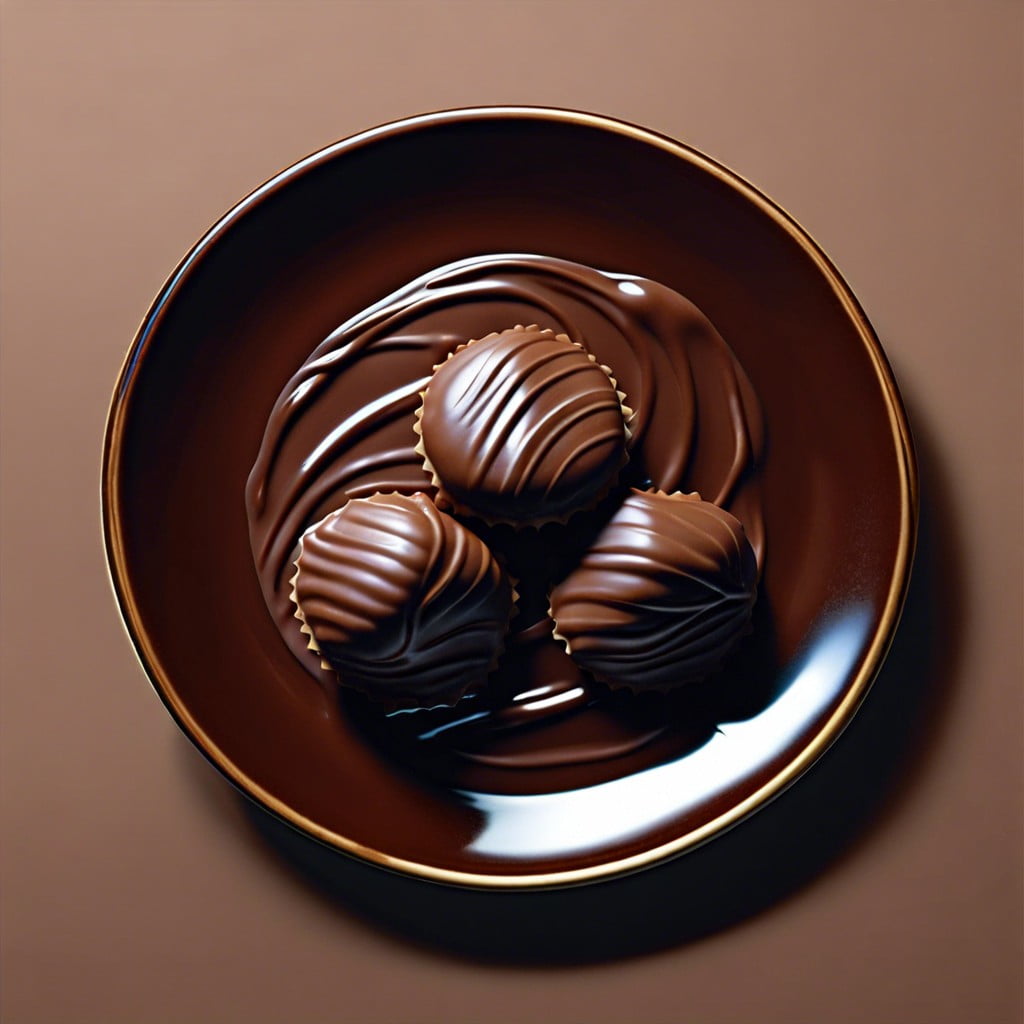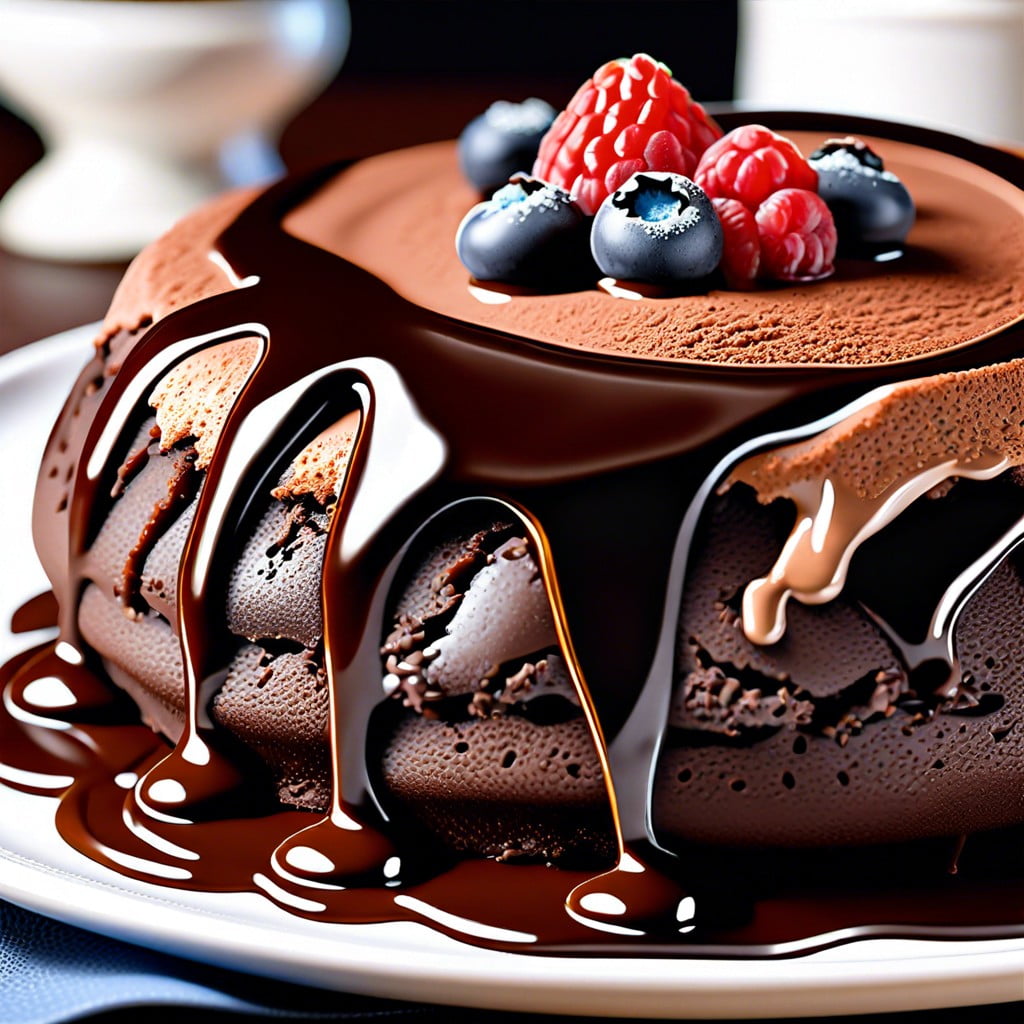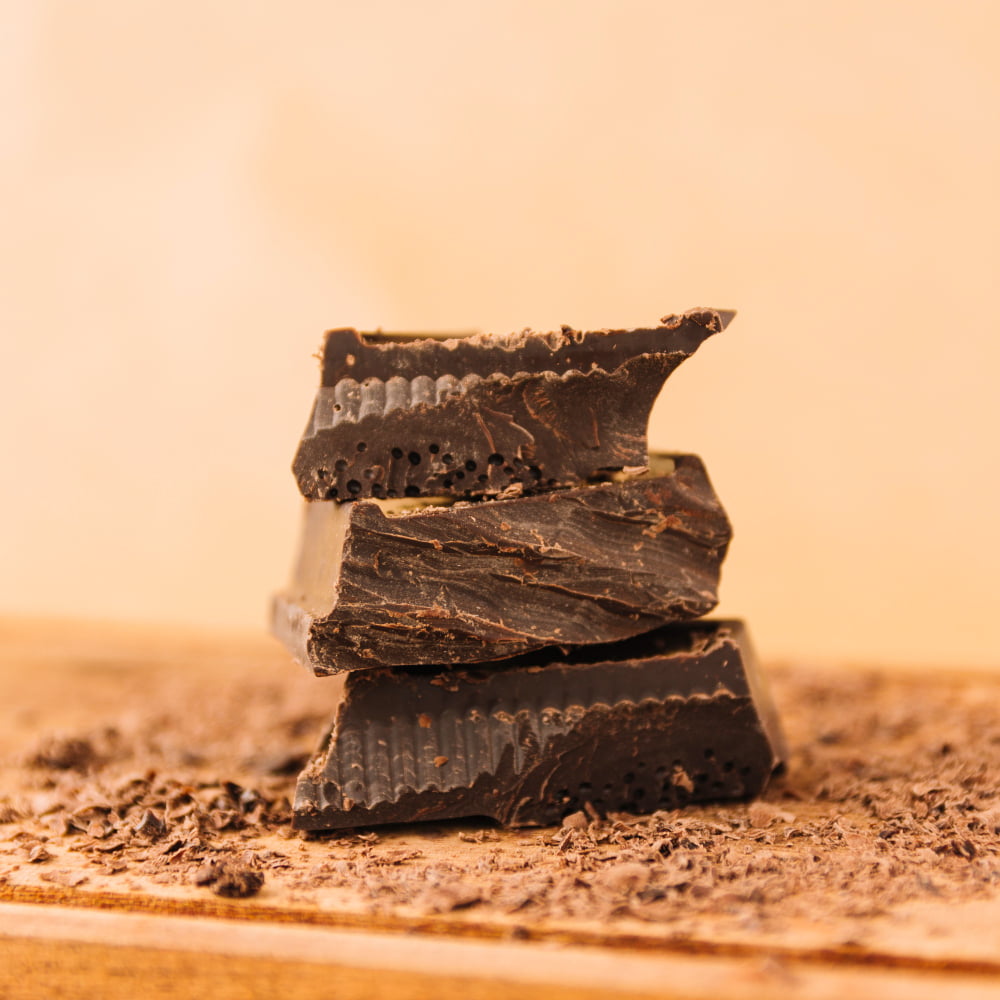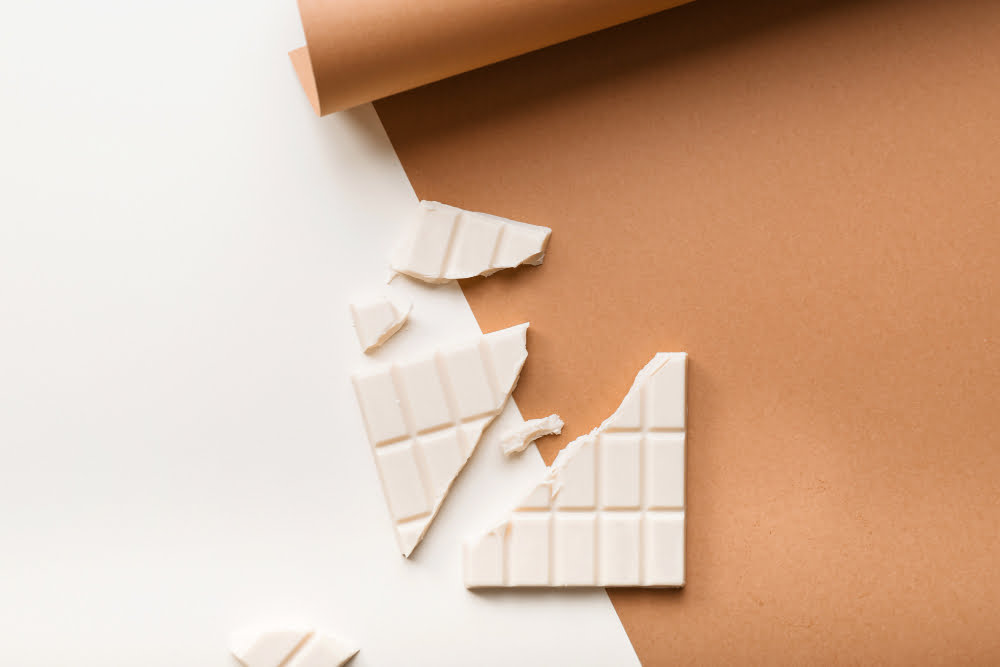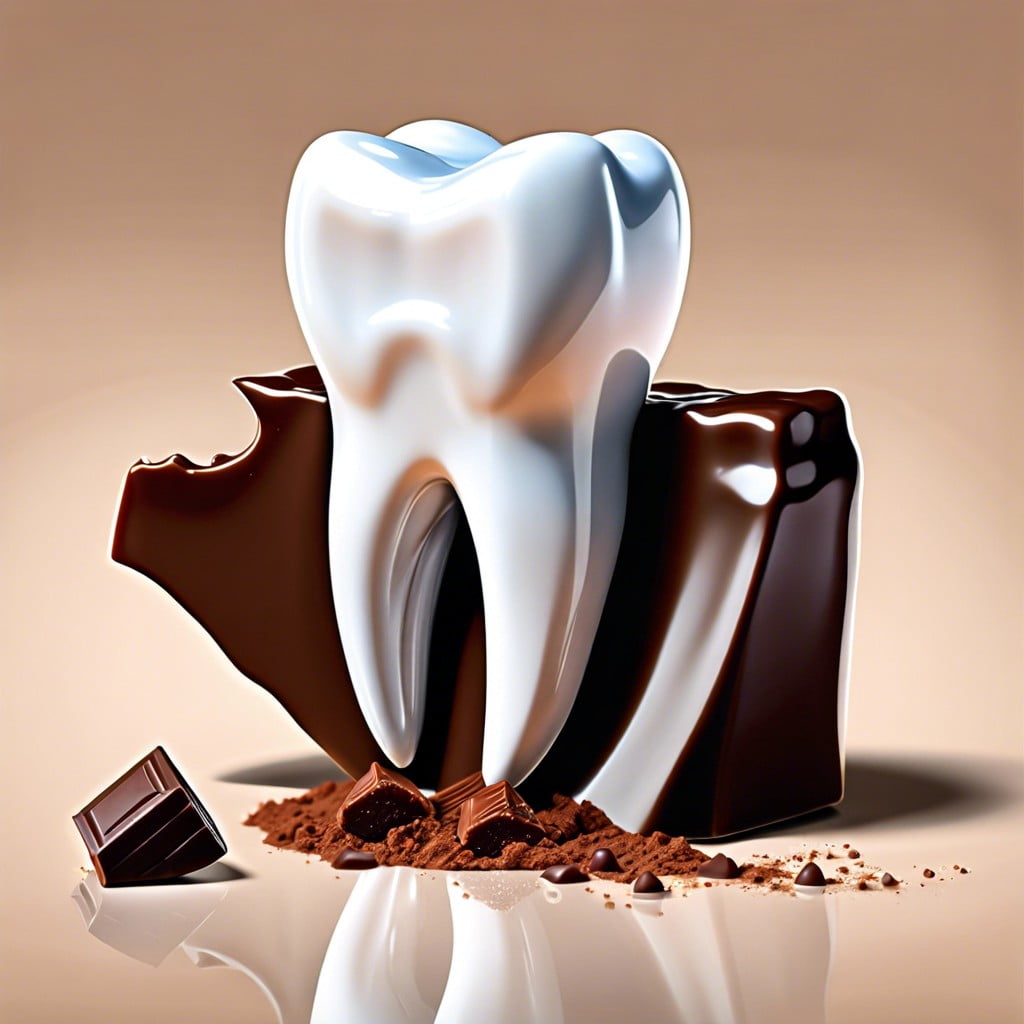Chocolate can spoil over time, and this article will inform you about how to identify when it’s no longer good to eat and how to properly store it to extend its shelf life.
Key takeaways:
- Proper chocolate storage: Cool, dry place away from sunlight.
- Bloom: Sugar bloom dissolves sugar, fat bloom changes texture.
- Shelf life: Dark chocolate lasts up to 2 years, milk chocolate about 1 year, white chocolate 4-6 months.
- White stuff on chocolate: Fat and sugar bloom, safe to eat.
- Expired chocolate: Flavor and texture degrade, but generally safe to eat.
Inside
Quality and Freshness
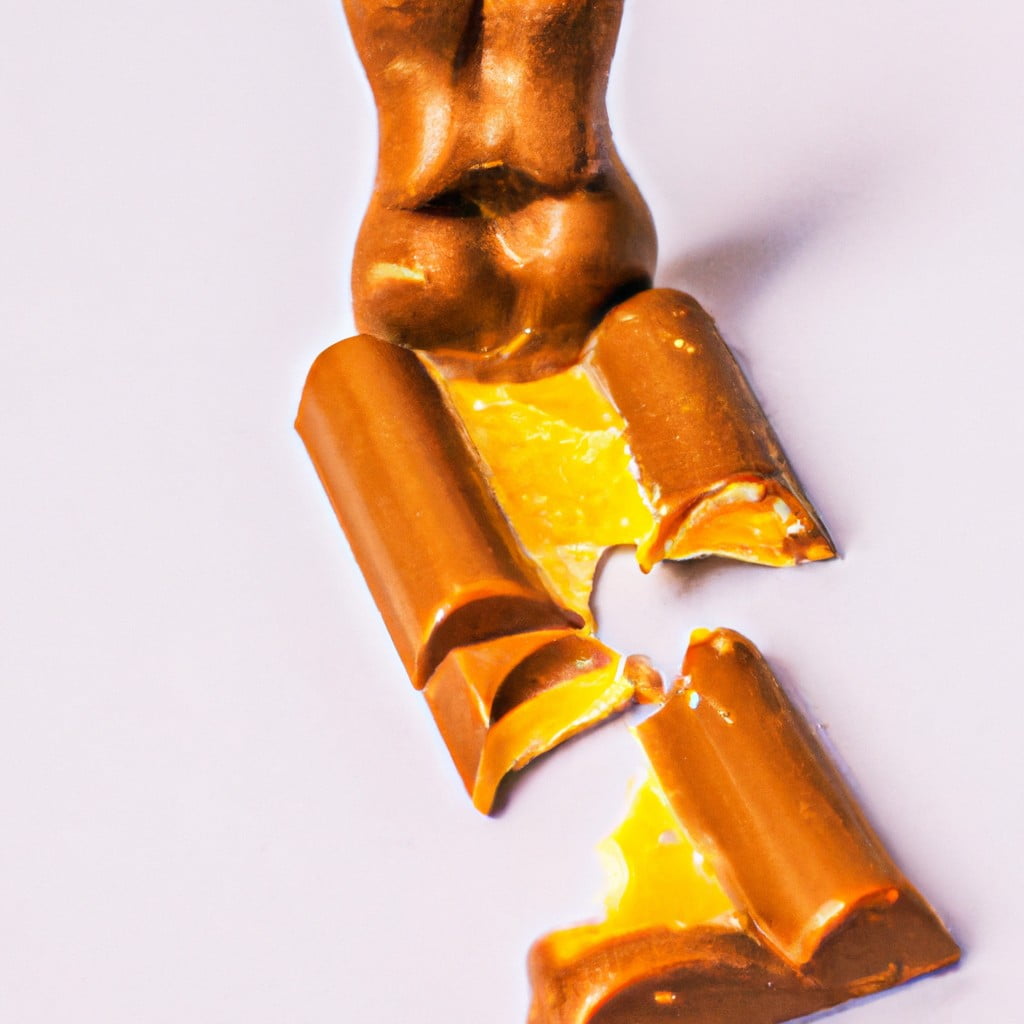
Chocolate is sensitive to temperature, humidity, and odors, which can impact its quality and freshness over time. Stored properly, dark chocolate can maintain its best quality for about two years, while milk and white chocolate should be consumed within a year.
Keep chocolate in a cool, dry place away from direct sunlight, ideally between 60-68°F (15-20°C) with less than 50% humidity. Fluctuations can cause fat and sugar crystals to rise to the surface, changing texture and taste.
Avoid refrigerating chocolate unless absolutely necessary. If you must, seal it tightly to prevent moisture and odors and allow it to reach room temperature before unwrapping to avoid condensation.
By following these storage guidelines, you help preserve your chocolate’s complex flavors and velvety texture, ensuring a delightful tasting experience every time.
The Science Behind the Bloom
When chocolate develops a whitish coating, it’s undergoing what’s known as ‘chocolate bloom.’ This phenomenon occurs due to two distinct processes: sugar bloom and fat bloom.
Sugar bloom happens when moisture interacts with the chocolate surface, dissolving some of the sugar content. Once the moisture evaporates, it leaves behind a rough, white layer of sugar crystals. Factors like refrigeration or dramatic shifts in temperature can exacerbate this process.
Fat bloom, on the other hand, is caused by a change in the fat components of chocolate, specifically cocoa butter. If the chocolate melts slightly and then re-solidifies, or if it’s stored at too high a temperature, the cocoa butter can rise to the surface and crystallize. This creates a grayish-white appearance and is more common in chocolates with higher cocoa butter content.
Both types of bloom affect the texture and mouthfeel of chocolate, though they do not indicate spoilage. The phenomenon is merely a cosmetic issue and does not render the chocolate unsafe to eat.
Does This Depend On the Type of Chocolate?
The shelf life of chocolate can vary depending on its type:
- Dark chocolate, known for its high cocoa content and lack of dairy, often has the longest shelf life, lasting up to two years when stored properly.
- Milk chocolate includes milk powder or condensed milk, which reduces its shelf life compared to dark chocolate, typically to about one year.
- White chocolate contains cocoa butter, sugar, and milk but no cocoa solids. This type is more prone to oxidation and can spoil faster, usually within 4-6 months.
- Chocolate with fillings, such as nuts and caramel or fruit, can spoil quicker as the fillings may have shorter shelf lifes than the chocolate itself.
Proper storage conditions – cool, dark, and dry – are particularly important for preserving the quality of all chocolate types. Temperature fluctuations and exposure to air and light significantly impact chocolate’s lifespan, regardless of its variety.
What’s That White Stuff On My Chocolate?
If you’ve encountered white or grayish streaks and spots on chocolate, you’ve likely seen what’s known as ‘chocolate bloom.’ There are two types:
- 1. Fat bloom: This occurs when cocoa butter separates from the cocoa solids and re-solidifies on the surface, which can happen due to temperature fluctuations or improper storage.
- 2. Sugar bloom: Caused by moisture. When chocolate is exposed to air with high humidity, sugar dissolves on the surface. Once the moisture evaporates, it leaves behind a fine layer of sugar crystals.
Although bloom can change the texture and appearance, it doesn’t mean the chocolate is unsafe to eat, it simply indicates it has experienced some temperature changes or has been stored in a humid environment.
Is Expired Chocolate Safe to Eat?
Expired chocolate often raises safety concerns. While chocolate does not spoil like fresh produce, its flavor and texture can degrade over time. The components in chocolate, such as cocoa solids and cocoa butter, have a long shelf life and, when stored properly, do not promote bacterial growth.
Eating chocolate past its expiration date may lead to a less enjoyable experience rather than a health risk. The taste might be stale or the texture waxy.
If chocolate has undergone significant changes, such as the presence of mold or an off smell, discard it for safety reasons. Otherwise, if it’s just past the best before date and still looks and smells normal, it’s generally safe to eat but may not provide the optimal chocolate experience.
